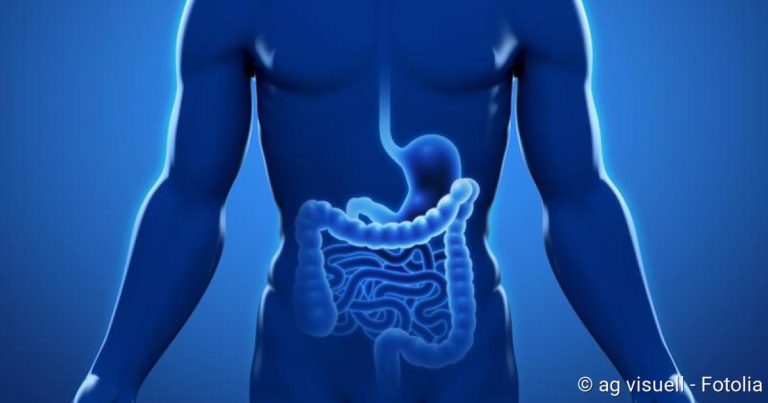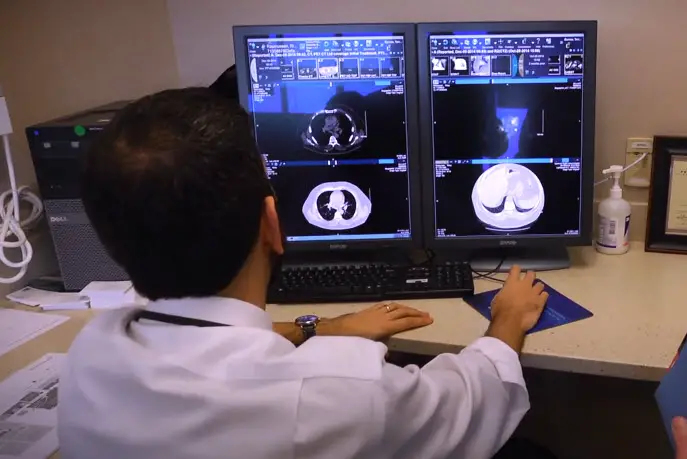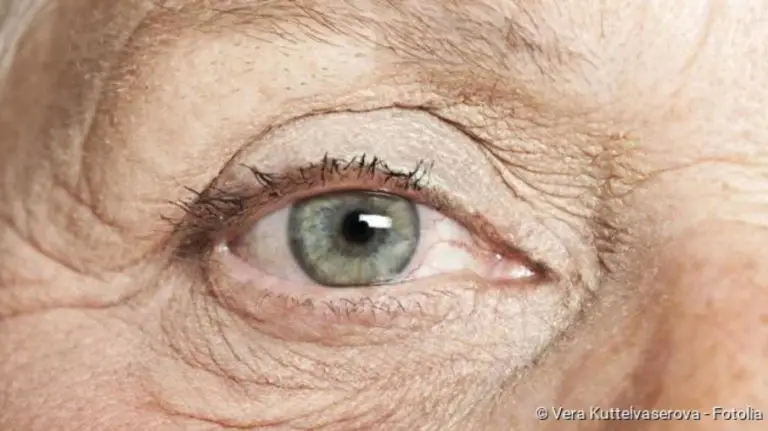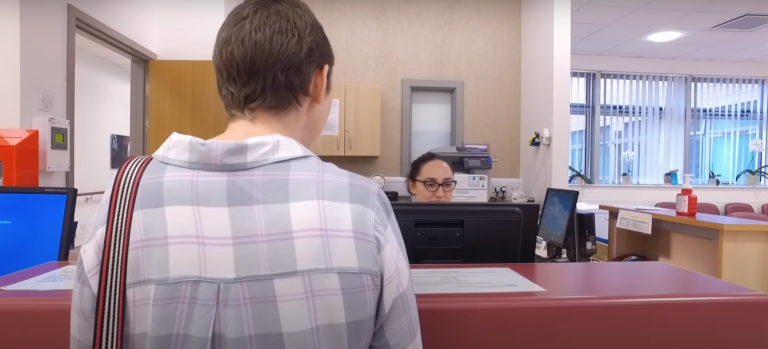Schizophrenia: symptoms; warning signals, therapy, causes
Schizophrenia: symptoms; warning signals, therapy, causes

Brief overview
- What is schizophrenia? severe mental illness. The main forms are paranoid schizophrenia, hebephrenic schizophrenia, catatonic schizophrenia.
- Symptoms: Delusions (e.g. paranoia), hallucinations (e.g. hearing voices), disorders of emotional movements (e.g. fluctuating between extreme moods), thinking and speech disorders, psychomotor abnormalities (bizarre postures, immobility, etc.)
- Causes: unexplained, but various influencing factors (triggers) such as genetic predisposition, high sensitivity, stressful situations, stress, disturbed messenger metabolism in the brain (possibly drugs as triggers)
- Therapy: medication (neuroleptics, antidepressants, tranquilizers), cognitive behavioral therapy
- Schizophrenia in children: rare, often overlooked
- Prognosis: very variable, depending on the form and severity of the disease
What is schizophrenia?
Schizophrenia is a severe mental disorder. Those affected suffer at times from massive changes in their thoughts, feelings and perception. Their behaviour also changes dramatically and often has a bizarre or frightening effect on outsiders.
Experts consider schizophrenia to be one of the endogenous psychoses: Psychoses are mental illnesses in which patients perceive or process reality in a different way. “Endogenous” means that the disease in question is caused by various factors “from within”, i.e. without any recognisable physical cause and without any recognisable connection to certain experiences.
People with schizophrenia do not have a split personality, as is often assumed. Thus, they do not carry several personalities within them that appear alternately, as is the case with dissociative identity disorder.
You should become aware if the patient behaves, talks or does things completely differently than before. In some cases they show extreme behavioural abnormalities: Those affected hear voices that are not there, for example, or feel persecuted. They are also inaccessible to logic or very erratic, so to speak “illogical” in their thoughts or actions.
Are they dangerous? Usually completely harmless! In cases of delusion and in cases of agitation – especially when the person concerned is afraid – assaults on others may occur. Do not show any aggression or talk back here. If you understand the disease better, you will be able to adjust to the patient more easily and be at his side!
Priority is given to patience, understanding and mindfulness. If a patient in a delusional phase wants to talk to you, listen to him. But do not encourage him to tell others. Don’t talk him out of his delusion. Try to distract him or her, for example by directing the conversation to hobbies or innocuous topics.
Schizophrenia: symptoms
Symptoms of schizophrenia are extremely varied. Every patient develops a very individual clinical picture. To outsiders, patients can seem unpredictable and very frightening – especially if someone knows very little about the disorder.
Certain symptoms occur even before the onset of schizophrenia. These include sleep disorders, severe irritability and tension. Those affected often react particularly sensitively to light and sound. They often become suspicious of their fellow human beings and retreat. Some neglect their appearance and are increasingly less interested in school or work. Occasionally the first deceptive perceptions also occur. These signs can last for several months, but also for years before the schizophrenia enters its acute phase.
Acute and chronic phase of illness
Schizophrenia usually progresses in phases. The symptoms that occur in the acute phase are called “positive schizophrenia symptoms” (positive symptoms): Here, symptoms that healthy people do not show predominate. Hallucinations, for example, often occur, for example patients hear voices that are not present. Many of those affected also have delusions such as persecution mania. Overall, patients tend to be active or overactive during the acute phase of the disease.
The chronic phase, on the other hand, is characterized by negative or minus symptoms, i.e. the focus is now on restrictions of certain mental functions and emotionality. Patients thus fall into external and internal lethargy: they become lethargic and appear exhausted. Every activity is difficult for them. They neglect their social contacts and retreat. Some even neglect their personal hygiene. This behavior not only affects their private lives. Those affected are often no longer able to carry out their profession. So many people find it difficult to get up in this phase to get out of bed at all, let alone get through a whole working day. In addition, schizophrenic patients often appear emotionless during the chronic phase of the illness. They no longer show joy. Her voice is monotonous and her facial expression is expressionless. Your interest in hobbies, job and social contacts is dwindling. Their language is impoverished.
Three subtypes of schizophrenia
Depending on the predominant symptoms in the acute phase, schizophrenia is divided into three subtypes: Paranoid schizophrenia, hebephrenic schizophrenia and catatonic schizophrenia.
In practice, however, it turns out that there are no rigid drawers for schizophrenia: Typical symptoms of one form also occur in patients who have typical symptoms of another form. A clear classification of patients into one of the three subtypes is therefore often not possible.
Paranoid schizophrenia
Paranoid schizophrenia is the most common form of the disorder. The most prominent symptoms in the acute phase are delusions and hallucinations.
A common delusion is paranoia. Here, those affected are convinced that they are being persecuted by a person, an organization or even by extraterrestrials. They fear being constantly monitored and bugged. Relationship delusions are also often seen in paranoid schizophrenia: those affected believe that actions or statements of a certain person are directed at them. Other variants of delusion include megalomania and delusional messages (such as a death message through a normal black coat).
Among hallucinations, acoustic hallucinations are very common in paranoid schizophrenia: the patients hear voices that do not exist in reality, for example. Sometimes the voices seem friendly, but often threatening, because they give orders to the patient or insult him. Physical hallucinations are also possible: For example, some patients are convinced that individual body parts are disintegrating or are not in the right place. Less common in paranoid schizophrenia are visual and touch hallucinations.
You can read more about this particular form of schizophrenia in our article Paranoid schizophrenia.
Hebephrenic schizophrenia
In this form of schizophrenia, the thinking, emotions and drive are particularly affected. For many patients, thinking seems incoherent and illogical. This is reflected in the language. Some patients talk a lot and without context. Some speak only in word fragments or neglect the sentence structure. For outsiders, what has been said is then no longer understandable. Conversely, in acute phases, however, it also happens that those affected no longer speak at all.
The emotional disorders in hebephrenic schizophrenia lead to distant and often inappropriate behavior. For example, the people concerned laugh while saying that they are very unhappy. Or they fool around at a funeral. This often irritates and snubs those affected in their environment.
In an acute phase, patients’ mood can be both euphoric (manic) and depressed (depressive). This change can be confused with the symptoms of bipolar disorder.
Learn more about this form of schizophrenia in the article Hebephrenic schizophrenia.
Catatonia Schizophrenia
For a catatonic schizophrenia mainly psychomotor disorders are typical. The patients perform strange-looking movements, for example with their hands, arms or legs. They bend their bodies or run around aimlessly. In these moments the patients are highly excited. They often stereotypically repeat what someone else says.
In other moments they fall into a state of rigidity (stupor). They then often remain in an unusual position for hours. Although the patients are awake, they no longer react and speak in this state (mutism).
Today, catatonic schizophrenia occurs only rarely – possibly because modern drugs are more effective than those previously used.
Schizophrenia: causes and risk factors
What ultimately triggers schizophrenia is not yet known exactly. However, several factors are certainly coming together, including genetic, biological and psychosocial ones.
Genetic causes of schizophrenia
In any case, a genetic predisposition plays a role in the development of schizophrenia. For example, if one identical twin suffers from schizophrenia, the other twin will also suffer from the same disease in about 45 percent of cases. The risk of illness is equally high if both parents are schizophrenic. If only one parent is affected, the risk for children is still 12 percent. By comparison, only about one percent of the average population suffers from schizophrenia.
Stress and negative experiences
People who suffer from schizophrenia are likely to be particularly sensitive to stress. Even before the disease breaks out, they often have difficulty dealing with stressful situations. At a certain point the load becomes too great. Then stress becomes the trigger that triggers the disease.
Many schizophrenic patients report critical life events before the onset of the disease. This can be, for example, the loss of a close person or a problematic professional situation. But positive situations can also cause stress – for example a wedding or the birth of a child.
Brain changes
It is assumed that neurotransmitters in the brain play an important role in the onset of schizophrenia. Dopamine, for example, is important for motivation and inner drive, but also for motor control. All this is disturbed in schizophrenia. When schizophrenia patients take amphetamines, their bodies release more dopamine. At the same time the symptoms of schizophrenia get worse.
Glutamate and serotonin also seem to play a role. The latter has a mood-lifting effect and influences pain perception and memory performance.
In addition, certain brain structures are altered in people with schizophrenia. The limbic system, which is responsible for regulating emotions, is particularly affected.
Drugs and schizophrenia
It is not clear whether drugs can cause schizophrenia. Some experts suspect a connection between schizophrenia and the use of drugs such as cocaine, LSD, amphetamines or cannabis.
What is certain is that some drugs can cause delusions, hallucinations and other conditions that correspond to the symptoms of schizophrenia. However, the effect diminishes after some time.
Some studies show that drug use significantly worsens the course of the disease in schizophrenia. The fact that a genetic disposition in combination with certain substances can also trigger schizophrenia is still unclear.
Schizophrenia: examinations and diagnosis
If you suspect that you or a relative is suffering from schizophrenia, you should contact a specialist clinic for schizophrenia or a psychiatrist. There are now also a number of early detection and therapy centres that specialise in the disease.
In order to be able to make a diagnosis of schizophrenia, a detailed conversation with the person concerned is necessary. The psychological symptoms that occur are discussed in detail. There are defined criteria and special clinical questionnaires for this purpose. The leading symptoms that are asked for are defined in the ICD-10 for schizophrenia:
- Thought making, -induction, – withdrawal, – propagation
- Delusions of control or influence; feelings of what has been made with regard to body movements, thoughts, activities or sensations; delusions
- Commenting or dialogical voices
- Persistent, culturally inappropriate or completely unrealistic delusion (bizarre delusion)
- Persistent hallucinations of any sensory modality
- Thought tearing off or inserting thoughts into the flow of thought
- Catatonic symptoms such as arousal, postural stereotypes, negativism or stupor
- Negative symptoms such as conspicuous apathy, speech deprivation, flattened or inadequate affect
For a diagnosis of schizophrenia, at least one clear symptom (or two or more symptoms if less clear) of groups 1-4 or at least two symptoms of groups 5-8 must occur almost continuously for a month or more.
Exclusion of other diseases
Symptoms similar to schizophrenia can also occur, for example, in brain diseases (such as epilepsy, brain tumour), various mental disorders (such as depression, bipolar disorder, anxiety disorders) as well as in states of intoxication (such as from cocaine, LSD or alcohol). These must be excluded before the doctor can make a clear diagnosis of schizophrenia. Various studies are necessary for this.
For example, blood and urine tests can be used to detect drugs and medicines in the body that may be responsible for the symptoms. Blood tests also help to rule out metabolic disorders or inflammation, for example.
An imaging examination of the brain using computed tomography or magnetic resonance imaging shows whether abnormalities in the brain could cause the schizophrenia symptoms. If the examinations give rise to the suspicion of encephalitis, the cerebrospinal fluid (liquor) must also be examined (liquor diagnostics).
The doctor can also use special tests to check various brain functions, such as organizational thinking, memory and concentration.
Schizophrenia often occurs together with other mental disorders (such as anxiety disorders, bipolar disorder, etc.). This can make the diagnosis more difficult.
Schizophrenia: treatment
Schizophrenia is treated with medication and psychotherapy. The problem is that patients in acute schizophrenic phases lack insight into the disease. If there is a risk that the patient will endanger himself or herself or others, compulsory hospitalization may become necessary.
If an acute phase breaks out, the patient is first treated in a clinic to stabilize him. Afterwards, he can usually resume his life at home independently.
Drug treatment of schizophrenia
Different groups of drugs can be used to treat schizophrenia, depending on the form and severity of the symptoms:
- Neuroleptics (antipsychotics): They were the first effective drugs for treating psychosis. By intervening in the metabolism of nerve messengers, they reduce tension and anxiety, delusions and hallucinations. However, neuroleptics have strong side effects such as muscle stiffness, tremor, muscle twitching, subdued emotions, fatigue, listlessness and reduced reaction speed.
- Atypical neuroleptics: These further developments of the “classic” neuroleptics work better and have fewer side effects. Well-known representatives include risperidone and clozapine.
- Antidepressants: In addition to the antipsychotic drugs (classic or atypical neuroleptics), the doctor sometimes prescribes antidepressants. This is useful for schizophrenia patients who are also depressed. Antidepressants have a positive influence on mood, drive and performance.
- Sedatives: During an acute psychotic phase many patients suffer from severe anxiety. Then sedatives can help. However, since they are dependent, they are only used for a short period of time if possible.
Unlike sedatives, neuroleptics cannot cause addiction – neither physically nor psychologically.
Psychotherapy for schizophrenia
Psychotherapy is becoming increasingly important in the treatment of schizophrenia. It can have a long-term positive effect on the course of the disease. Cognitive behavioural therapy is usually chosen. Important elements of psychotherapeutic treatment are:
Reduction of fears through information: First of all, it is important to take away the patient’s fear of the disease by providing detailed information about schizophrenia. The relatives also benefit from more knowledge, for example by developing more understanding for the patient and thus being able to support him/her better. Communication training, which makes it easier to deal with the patient, also helps in this respect.
Dealing with stress and burdensome situations: In therapy, the patient learns, among other things, to cope better with stressful situations that can aggravate his symptoms. The central aspect of this is dealing with stress.
Processing frightening experiences: With the help of psychological schizophrenia therapy, the patient can also better cope with the frightening experiences he or she has gone through during the acute phases of the illness. This stabilizes him overall.
Recognize early warning signs: Patients also learn to recognise the early warning signs of a schizophrenic phase. These can be quite different. For example, sleep disorders or severe irritability often herald a new outbreak. It is then important to reduce the sources of stress and, possibly in consultation with the doctor, to increase the drug dose for a short time.
Support after the hospital stay
After an inpatient stay, the patient usually needs support at home. This task is performed by social education workers. They help the affected person to find his way in everyday life.
Many patients find it particularly difficult that their ability to concentrate, their working memory and the ability to plan ahead have suffered as a result of the disease. Then cognitive rehabilitation will help. She works with behavioral therapeutic measures and special training on the computer. This increases the probability of returning to work. In addition, insight into the disease and adherence to therapy are strengthened.
Schizophrenia in children
In most cases, schizophrenia does not appear until after puberty in young adulthood. However, an estimated two percent of patients fall ill during childhood and adolescence. However, schizophrenic disorders are extremely rare before the age of ten. Physicians call “early onset schizophrenia” (EOS) a first manifestation of schizophrenia between the ages of 13 and 18. It is particularly observed in male adolescents.
Because the disease is so rare in children, it is often discovered late. The fact that the symptoms of schizophrenia in children and adolescents differ from those of adult patients also contributes to this.
In addition, the personality of children or adolescents naturally develops constantly. Mood swings are normal during puberty to a certain extent. However, if children and adolescents fall into longer depressive phases or experience severe speech and writing difficulties or delusions, a doctor or psychiatrist should be consulted urgently.
Schizophrenia: course of disease and prognosis
The risk of developing schizophrenia is generally about one percent. This means that an estimated 800,000 people in Germany live with the disease.
She meets men and women equally often. However, the disease breaks out earlier in men than in women. On average, they fall ill between the ages of 20 and 25 years, whereas women fall ill between 25 and 30 years. Why this is so, we don’t know.
Since the course of schizophrenia varies greatly from person to person, there is no generally valid prognosis. Some patients experience only one acute phase of the disease, in others the course is severe and leads to chronic schizophrenia. Still others have recurrent schizophrenic phases, but thanks to the treatment these phases also subside. Usually the acute symptoms become weaker over time. Nevertheless, schizophrenia often requires lifelong treatment.
Hebephrenic schizophrenia has a less favourable prognosis than the other forms of the disease. It begins insidiously, but often becomes chronic and then proceeds without symptom-free phases. In the process, the personality of the patients is increasingly changing.
Suicide risk
The anxieties caused by schizophrenia are often very distressing for the patients. After a few relapses, those affected often fall into deep hopelessness. This can even lead to suicide – the suicide rate among schizophrenia patients is about ten percent. Young men are particularly at risk. A good connection to therapists, family or friends is therefore particularly important.
Increased risk of other diseases
Statistically speaking, patients with schizophrenia have a significantly increased risk of various other diseases. These include metabolic and cardiovascular diseases, cancer and lung diseases. Physicians treating schizophrenia patients should pay special attention to the signs of schizophrenia.
One in four or five will be healed
Since schizophrenia patients are treated with a combination of neuroleptics and psychotherapy, the prognosis of the disease has improved significantly. Approximately 20 to 25 percent of the patients become completely healthy again with this treatment. But even if the patients are not completely cured, outpatient care is often sufficient to lead a largely normal life despite schizophrenia. The social environment has a major influence on this: if patients receive a lot of understanding and support from friends and family, this can have a positive influence on the course of the disease.
Schizophrenia: Information for relatives
If a person suffers from schizophrenia, it is extremely stressful for the relatives. In the acute phases, the patient lives in his delusional world and can hardly be reached. Perhaps his delusion also extends to the relatives to whom he accuses of dark intentions and treats them with suspicion.
At the same time, the relatives are important support for the patient. Their understanding and support are crucial for the course of the disease.
As a relative of a schizophrenia patient, you should therefore accept offers of help that provide you with detailed information about the disease and how to deal with those affected. For example, it is important that you encourage the patient to be as independent as possible. He must not be under- or overcharged in the process. A special communication training can also be useful for you.
In addition, seek the advice of the treating doctors and therapists and get advice if you are overwhelmed and don’t know what to do. Groups of relatives can also be an important help.




